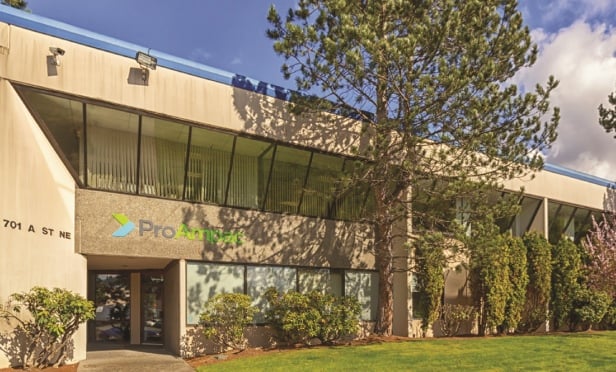The acquisition of distressed debt secured by commercial real estate, at or below par, whereby an investor assumes the role of lender in a loan relationship is an attractive option for commercial real estate investors.
Given the current economic climate, the investor who assumes the role of lender is often forced to exercise its default remedies against a non-performing borrower and/or guarantor. Before an investor purchases distressed real estate debt and steps into the lender’s shoes, if the transaction forecast indicates that the exercise of remedies will involve the completion of a judicial (versus non-judicial) foreclosure action, the investor should be aware of certain features of the judicial foreclosure process that may lead to increased transaction costs and greater delay in securing ownership rights in the property. Accordingly, the investor should make appropriate adjustments in any transaction cost forecast and completion timeline while considering the various strategic options to achieve its goals.
The Breakdown--Judicial vs. Non-Judicial States:
The principal process by which a foreclosure is completed varies among states. Simply put, a judicial foreclosure is onewhich primarily takes place in court whereas a non-judicial foreclosure is primarily completed outside of court.[i] The states where a judicial foreclosure is the primary means of foreclosing include Connecticut, Delaware, Florida, Illinois, Indiana, Iowa, Kansas, Kentucky, Louisiana, Maine, New Jersey, New York, North Dakota, Ohio, Pennsylvania, South Carolina, Vermont and Wisconsin.[ii] It is important to note that the foregoing summary simply reflects the most commonly used method of foreclosure.[iii]
In some jurisdictions, such as Washington, D.C.[iv], although a foreclosure typically occurs in a non-judicial context, applicable law contemplates the availability of a judicial foreclosure, which may, in certain cases, be the appropriate course of action. An investor should always review the relevant state law with the advice of counsel in those states where a non-judicial method is principally utilized to determine if a judicial foreclosure option is available, or in some cases mandatory, and whether it is an appropriate avenue to take dependent upon the facts of the case.[v]
Common Challenges & Considerations in Judicial Foreclosure:
1. Delay--The Contested Case and Cost
Generally, the judicial foreclosure process takes considerably more time to complete than the non-judicial foreclosure process. At the onset, one must examine the current state of the foreclosure docket of cases in a particular jurisdiction.[vi] Of course, the ultimate timeline for completing a judicial foreclosure is largely dependent on whether the case is contested by the borrower, guarantor or other parties in interest.
If it appears from a review of title to the property[vii], or by understanding the particulars of the loan transaction at hand, that the action may be contested, the investor should be prepared for the possibility of further cost and delays beyond the typical judicial foreclosure timeline estimate. Like any litigation case, a contesting party may utilize the arsenal of litigation tools available to any litigant to mire the foreclosure process with additional motion practice, hearings and delay in connection with raising defenses, filing counterclaims or otherwise.[viii] Of course, during any resulting delay, a property may be wasting and it may be necessary for a lender to request the appointment of a receiver.[ix]
2. The Guaranty
At first blush, the fact that a loan is guaranteed, personally or otherwise, may provide the investor with added comfort that the guaranty will ultimately lead to the lender being made whole or at least provide the lender with leverage in the foreclosure context. However, in an interesting twist, a personal guaranty may provide added incentive for a guarantor named in the judicial foreclosure action to slow the litigation process down by asserting defenses, resulting in delay and increased transaction costs.
A guarantor may be incentivized to raise defenses with the hope that the resulting delays will provide the guarantor with additional time to revive itself, the borrower and/or the property, or complete bankruptcy planning. An additional challenge the judicial foreclosure process poses, as it relates to a guaranty, is the decision a lender must make, in advance, about whether an action will be pursued against a guarantor as a count in the foreclosure suit or whether a separate lawsuit (apart from the foreclosure suit) should, or can, be filed against the guarantor.
In those jurisdictions where separate actions can be filed against the guarantor and the borrower, strategically more pressure may be brought to bear on guarantors when a lender initially files an action enforcing the guaranty and subsequently forecloses. However, maintaining separate actions is not always permitted. Commonly referred to as the “one-action” rule in certain jurisdictions, like New York, governing statutory law requires that any claim against a guarantor be made in connection with the foreclosure case, or the lender will lose its right to pursue the guarantor.[x]
In all events, the ultimate leverage and importance of a guaranty depends on the strategy adopted in relation to the facts of the transaction at hand (including, for example, property value and whether there will be a deficiency left for guarantors to be held liable for). Depending on the circumstances, in some cases, the guaranty may not provide much leverage for the investor/creditor at all.
3. The Importance of Foreclosure Judgment
If the investor undertakes a judicial foreclosure, although a seemingly technical (and less strategic) feature of the judicial foreclosure process, it is crucial to understand the importance of the judicial foreclosure judgment issued by the court. Take, for example, Section 45.031 (7)(a) of the Florida Code, which provides that “on filing a certificate of title, the clerk shall disburse the proceeds of the sale in accordance with the order or final judgment and shall file a report of such disbursements...”
Likewise, under the Illinois Code; (i) Section 15-1507 provides that the real estate is sold “on such terms and conditions as shall be specified by the court in the judgment of foreclosure” and (ii) Section 15-1512 provides that “the proceeds resulting from a sale of real estate shall be applied…if the sale was pursuant to judicial foreclosure…in the order of priority adjudicated in the judgment of foreclosure or order confirming the sale.”
The judgment of foreclosure is truly a map for how the remainder of the foreclosure process, subsequent to judgment, plays out. Accordingly, counsel for the investor/creditor must appreciate the need for, and likewise seek, specific and detailed relief in the foreclosure judgment, particularly in contested cases.[xi]
Several of the challenges attendant to a judicial foreclosure may also present issues in the non-judicial context. However, the reality is that the judicial foreclosure landscape may provide a recalcitrant borrower or guarantor more negotiating power and opportunities to impede the foreclosure than the non-judicial process.
The challenges common in the judicial foreclosure process should be considered together as combined risk. Understanding the risk and challenges inherent in judicial foreclosure leads to a better transaction cost forecast, completion timeline and, ultimately, the investor/creditor can develop the appropriate strategy to secure ownership rights in the property as quickly as possible.
Jennifer Kasman is an attorney at Kelley Drye & Warren LLP. She focuses her practice on a wide array of commercial transactions representing investors, lenders and property developers in connection with commercial real estate transactions and other asset based transactions. Kasman can be reached at [email protected].
[i] Each state process may have its own unique features. For example, in Maryland, although the process is essentially non-judicial, there are certain pleadings filed in court during the foreclosure process.
[ii] National Consumer Law Center, Foreclosures (2d ed. 2007 and Supp.); American Bar Association, Foreclosure Law and Related Remedies (2d ed. 2009).
[iii] Also of importance is the fact that, as a general rule, if a given state permits a non-judicial foreclosure, a prerequisite of the foreclosure proceeding non-judicially is that the relevant loan documents must contain important power of sale language (or a corollary provision). Otherwise, a lender may be forced to foreclose judicially. In any transaction, the first step is always to review the underlying loan documents to determine the available remedies.
[iv] Other examples are Utah, Oklahoma and Wisconsin.
[v] If, for example, various parties claim competing interests in the property, a judicial foreclosure may be the best way to determine priorities and interests.
[vi] As foreclosures rapidly increased across the country, some courts face a serious backlog and, as a result, creditors in certain jurisdictions may face delays in completing foreclosure actions.
[vii] For example, if the encumbered real estate was the subject of a construction or development project, contractors who have filed a lien may be inclined to contest the case and/or dispute the priority of their claim (as against the lender) if their interest stands to be eliminated by the foreclosure.
[viii] In the securitized loan context, a borrower may force the lender to prove that it has the proper documents in its possession, or otherwise, to foreclose.
[ix] A court will not necessarily “rubber stamp” a motion seeking the appointment of a receiver. Receivership law varies by state and is not always viewed as the best or most efficient way for property to be managed and controlled.
[x] N.Y. Real Property Actions and Proceeding
© Touchpoint Markets, All Rights Reserved. Request academic re-use from www.copyright.com. All other uses, submit a request to [email protected]. For more inforrmation visit Asset & Logo Licensing.






